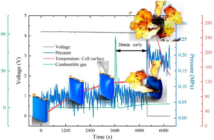Battery fade, whereby battery capacity shrinks over time, has proven to be a tricky problem for battery science to solve. Consequently, lithium batteries are great when we have a new one in our smartphone, but a real pain a few years later. Scientists at the DOE’s Argonne laboratory finally got curious enough to wonder why battery failure happens. Could they reduce the rate of battery fade once they understood why the phenomenon happens?
Scientists Identify Manganese as Causing Battery Fade

Battery capacity depends on the number of ions marching back and forth between electrodes as the battery charges and discharges. Specialized ‘transition ions’ enable the process.
Now the scientists have discovered some of these ions – especially manganese – are sacrificial. Thus, more and more of them end up in the anode never to see the cathode again. From a user perspective, we sense the first signs of battery fade.

As the ‘sacrificial ions’ approach the cathode, they encounter a battery zone scientists call the ‘solid-electrolyte interphase’. This is the product of reactions between the anode and the liquid electrolyte.
As the manganese-ions start decomposing, lithium-ions find it increasingly difficult to continue on their journey. They progressively abandon the uneven struggle. As a result, there are fewer and fewer to march back and forth.
Argonne scientist Daniel Ahraham was distinctly upbeat when an in-house media representative interviewed him. “There’s a strict correlation between the amount of manganese that makes its way to the anode and the amount of lithium that gets trapped,” he said. “Now that we know the mechanisms behind the trapping of lithium ions and the battery fade, we can find methods to solve the problem.”
This may prove to be an even greater enigma. We wish the Department of Energy (DOE) scientists good luck in their endeavors.
Related
Preview Image: Manganese Ions’ Suicidal Dive




